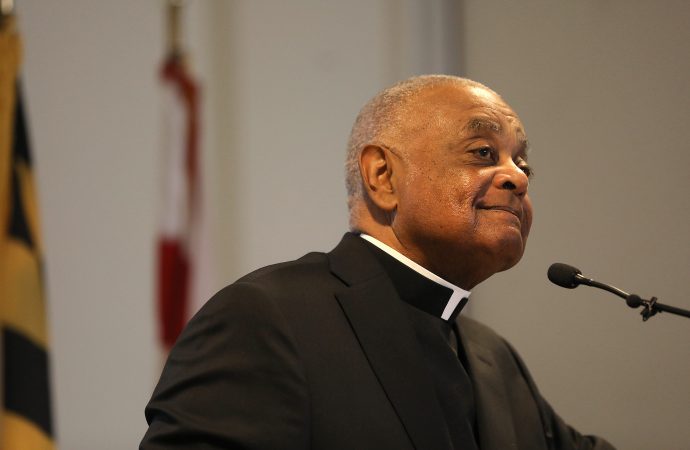
WINDSOR TERRACE — Controversy over President Donald Trump’s visit to the Saint John Paul II Shrine in Washington D.C., is still lingering in the air, more than two weeks after the stopover made headlines.
The latest development involves questions over whether Archbishop Wilton Gregory of Washington D.C., who was highly critical of the president’s June 2 visit, knew well in advance that Trump was coming or whether he was kept in the dark.
Crux, a leading Catholic news site, reported that Archbishop Gregory had not been informed of the visit until the night before when the White House issued a statement announcing the president’s plans to stop at the shrine.
The shrine is operated by the Knights of Columbus, a Catholic fraternal organization and does not fall under the jurisdiction of the Archdiocese of Washington D.C.
Catholic News Agency reported that the archbishop was invited to attend with Trump several days before the visit took place.
A White House official told The Tablet on June 9 that Archbishop Gregory was invited a week prior to Trump’s visit.
“Archbishop Gregory received an invitation to the President’s event at the St. John Paul II Shrine the week prior to the President’s visit. He declined due to other commitments, Deputy Press Secretary Judd Deere told The Tablet in an email.
Further, CNA cited correspondence dated May 30 it reportedly obtained in which the archbishop’s office declined the White House’s invitation. The archbishop’s office cited “a prior commitment on his schedule at Catholic University,” CNA reported.
In addition, CNA reported, Archbishop Gregory personally informed a White House aide on May 29 of the fact that he would not take part in the president’s visit.
The Office of the Secretariat for Communications for the Archdiocese of Washington, D.C. did not return messages from The Tablet seeking a response to the controversy.
Archbishop Gregory was stinging in his criticism of the visit.
“I find it baffling and reprehensible that any Catholic facility would allow itself to be so egregiously misused and manipulated in a fashion that violates our religious principles, which call us to defend the rights of all people even those with whom we might disagree,” he said in a statement.
“Saint Pope John Paul II was an ardent defender of the rights and dignity of human beings. His legacy bears vivid witness to that truth. He certainly would not condone the use of tear gas and other deterrents to silence, scatter or intimidate them for a photo opportunity in front of a place of worship and peace,” the archbishop added.
The White House pushed back, telling the Washington Post it was shameful to question the president’s motives for the visit.
The purpose of the visit, which took place on the 41st Anniversary of the late Pope John Paul II’s return to his native Poland, was for President Trump to sign an executive order on religious freedom.
The visit took place amid the protests and unrest over the killing of George Floyd, an African-American man, at the hands of a white police officer on a Minneapolis street.
The day before Trump’s visit to the shrine, U.S. Park Police and National Guard troops reportedly used tear gas to force protesters out of Lafayette Square near the White House to clear a path for the president to walk from the White House to St. John’s Episcopal Church, where he was photographed holding a Bible.
